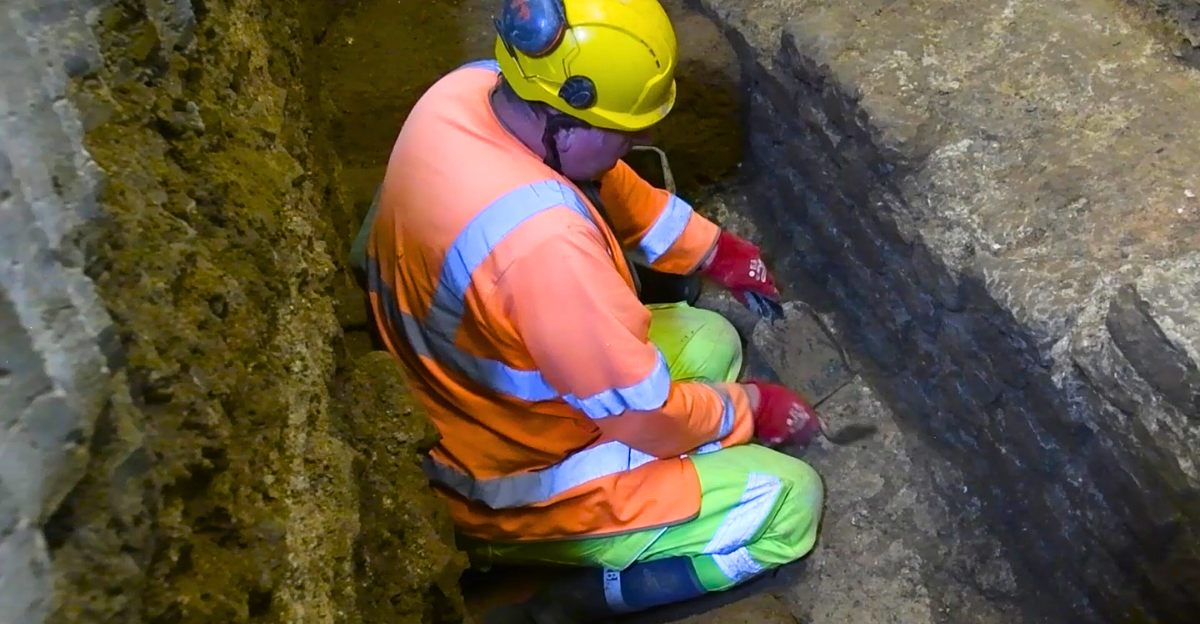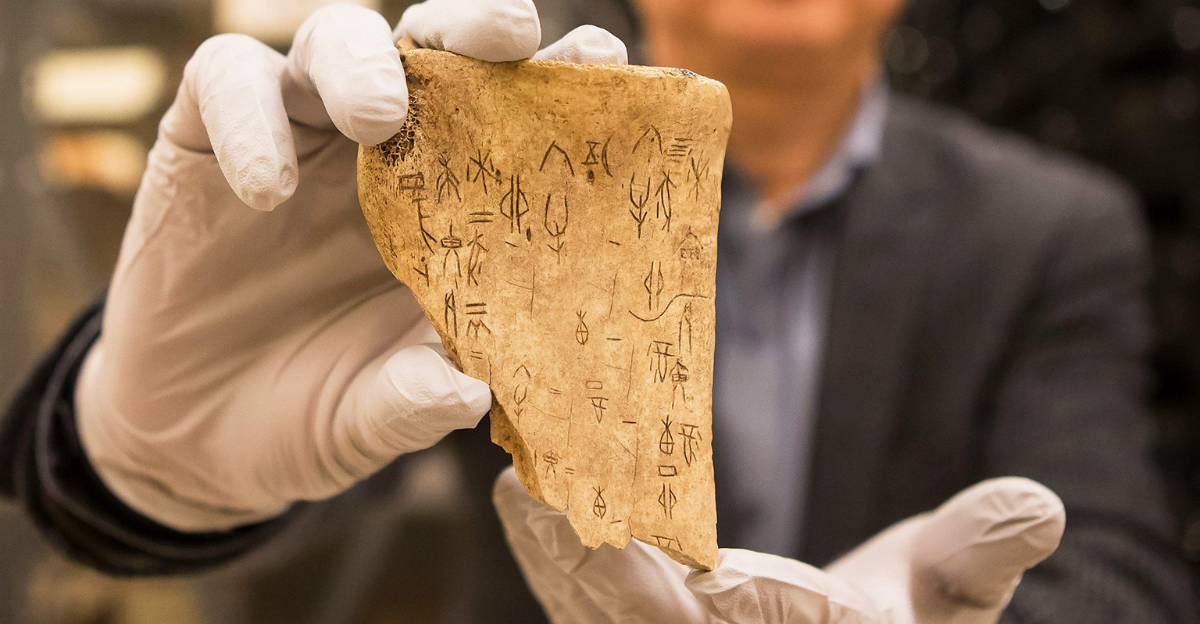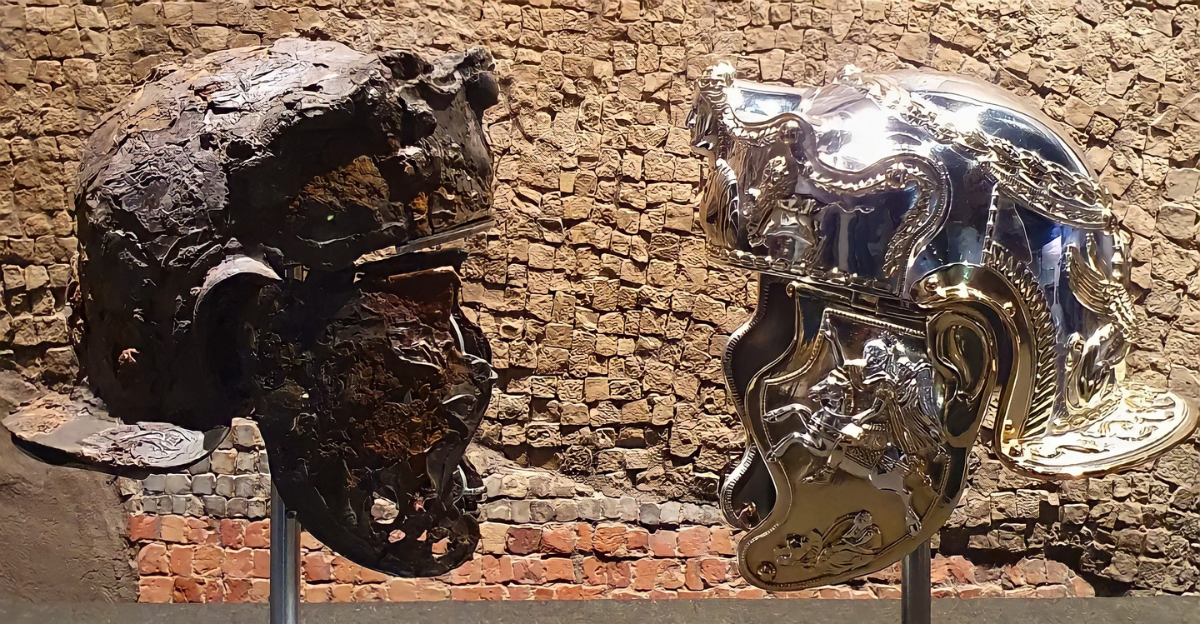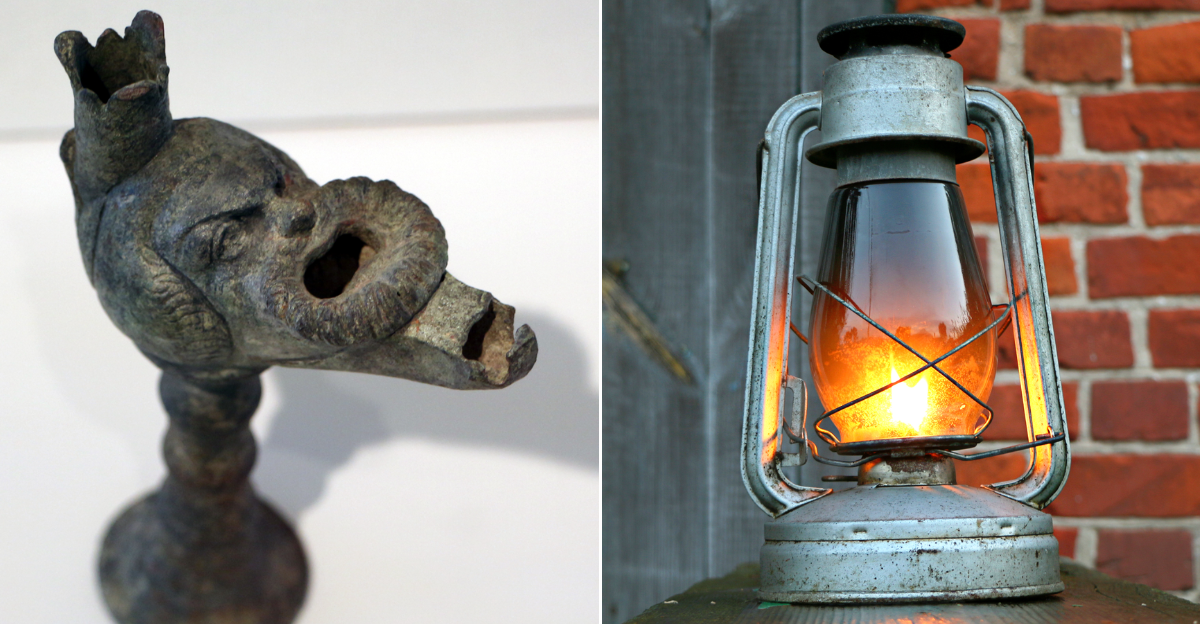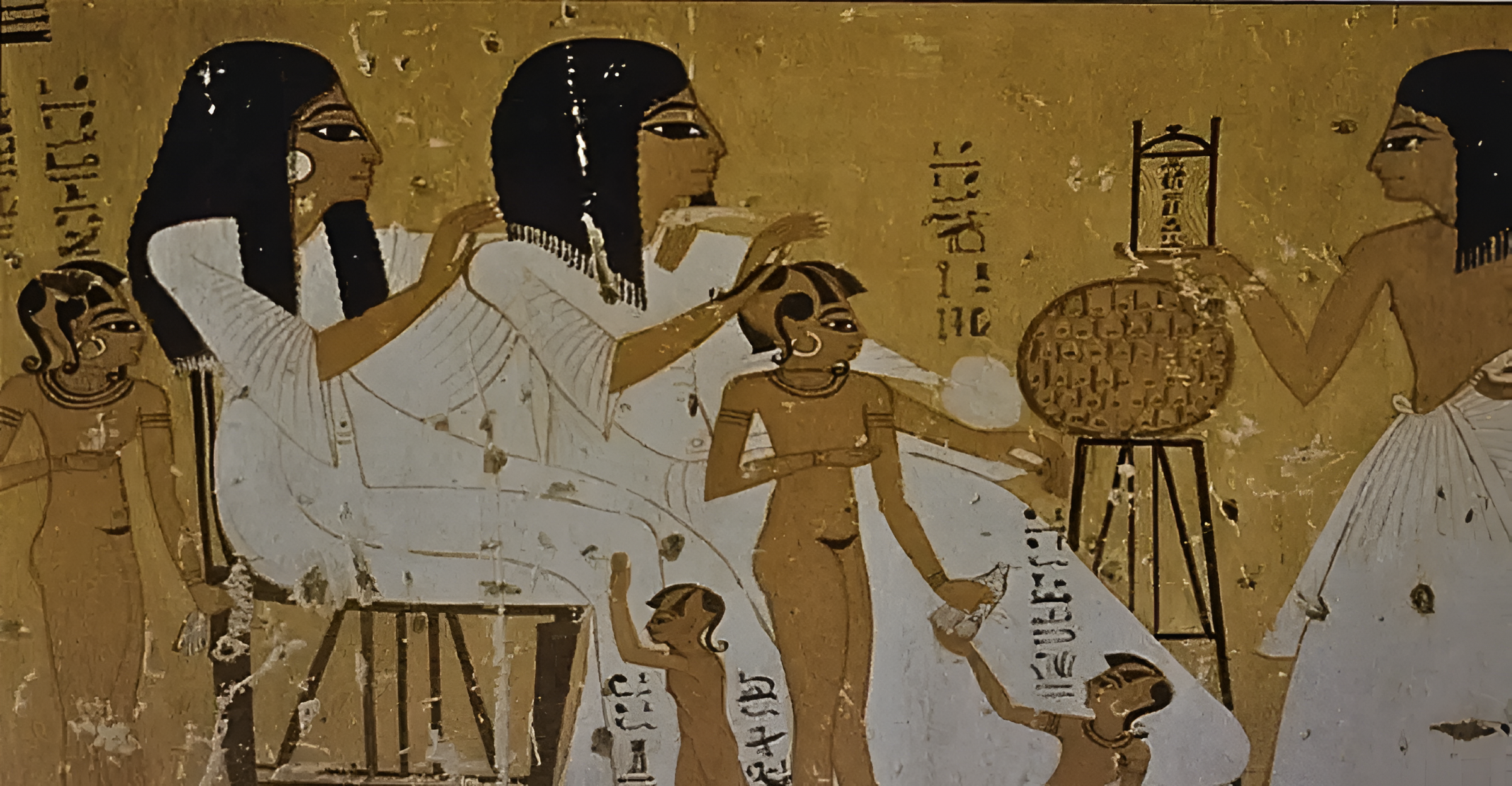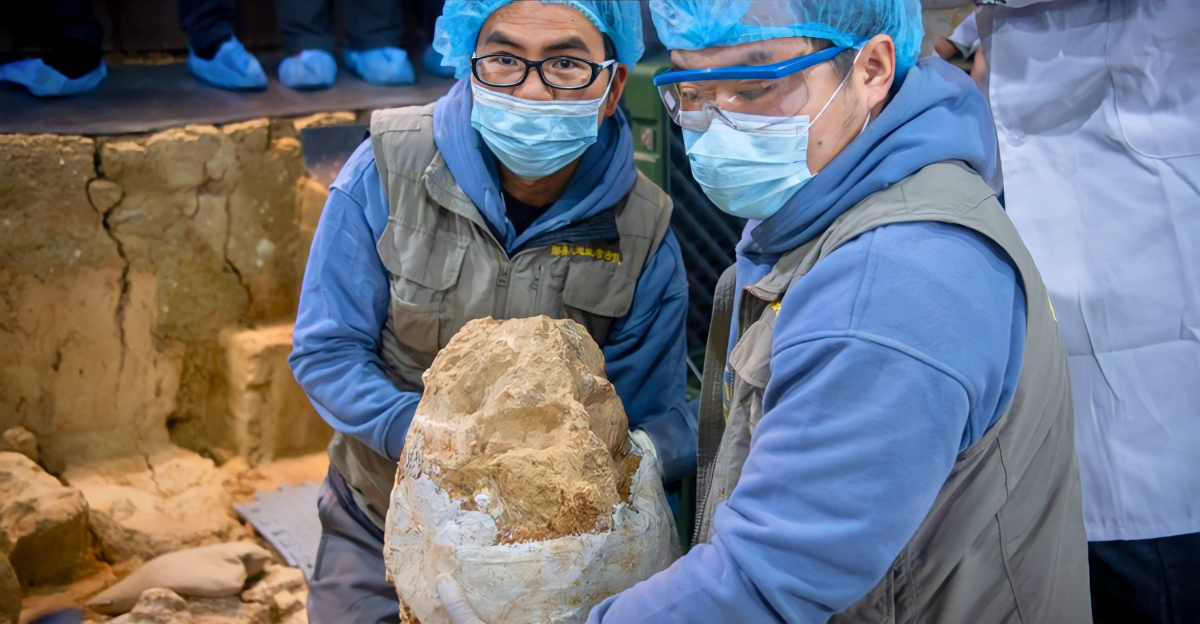
Even though poets, priests, and travelers have admired the mountains’ beauty for many years, no one suspected that one of China’s most famous mountains would have kept a secret this big. It was only recently that people found clues hidden beneath the ground.
As researchers delve deeper into decades of sediment, they find a great discovery that has been hiding for thousands of years. Evidence shows that researchers might have found signs of a thriving society that could change our understanding of ancient Chinese history.
Meet the Team Behind the Breakthrough

Dawenkou Cultural Heritage Preservation Center has a team of archaeologists who led this dig, working with local and international experts. This amazing team is led by Zhang Baowei, who has a deep knowledge of the area, which helped to unveil a long-forgotten society.
Many other contributors, including architectural analysts, artifact restoration specialists, and ritual scholars, have carefully studied each discovery to ensure it is understood accurately and based on solid science.
Dawenkou at Mount Tai

The most significant discovery is at the Dawenkou archaeological site, near Mount Tai’s base in eastern China’s Shandong Province. In 2024, they started a multi-year excavation project. Since the digging has begun, they have found numerous signs of an advanced settlement. One important feature is a large, carefully built trench 85 meters wide, hinting that the people had strong building skills and an organized society. There were signs that this was an innovative and forward-thinking civilization because there were remains of homes, graves, and places for ceremonies around the trench.
During the Neolithic Era

After research, experts have determined that these discoveries date between 6,100 and 4,600 years ago! This means the Dawenkou culture lived during the late Neolithic period (Which was the final stage of the Stone Age, a significant turning point for humans).
They have carefully evaluated artifacts, burial patterns, and settlement remains and, in doing so, could confirm that this place is one of the oldest known communities in China. While digging started in 2024 and is estimated to end by 2028, the first discovery happened back in the 1950s during railway construction. Now, we finally have the cutting-edge archaeological methods to complete the dig.
What is Significant About This Location?

The discoveries come from under Mount Tai, a famous mountain in China that has been important for over 2,000 years. Archaeologists are digging in the fields and hills near Dawenkou village, which is known for its ancient activity.
While Mount Tai is already known for its legends and myths, it is now even more popular because the ground below is layered with artifacts and structures, giving us new clues about China’s ancient history and how early cultures were connected.
The Research Questions Driving Discovery

Researchers are asking big questions, like why such an advanced group of people chose to live in this area and how their civilization affected the history of China. By looking at signs of trade, graves, defenses, and handmade tools, experts hope to understand how different social classes and early forms of leadership began.
They believe this study will help explain how later Chinese dynasties were shaped and show how vital the Dawenkou people were in the early development of Chinese society.
Architectural Skills of the Dawenkou Community

The newly uncovered settlement shows skills that were not very common for people living in the Neolithic period. Portions of their homes were made stronger using fired clay (a method that modern experts tried and struggled to copy). This suggests that these ancient people knew how to heat materials to very high temperatures, a skill that hasn’t been seen anywhere else in the world for that time period.
Liu Yunlong, site archaeologist, emphasized, “These walls may have been deliberately fired in their entirety to enhance structural stability, suggesting that people at the time had already mastered the ability to control extremely high temperatures.” Building these houses took careful planning, showing how the community balanced everyday life with special ceremonies.
Archaeologists say the Dawenkou site is “more advanced than imagined,” highlighting how skilled the builders were.
Burial Sites Give More Information

Burial practices in Dawenkou are very revealing in telling us about their society. Archaeologists found graves that show early signs of social classes and differences in rank. Some of the graves had nice items in them, like pottery, jade, and pig bones, while other graves had simpler items.
According to Liu Haiwang, the archaeological team leader, “The richness of the burial objects is closely linked to the size of the tombs, indicating that a clear social hierarchy and class stratification had already emerged.” This shows us how society started changing from everyone being equal to having some families with higher status. Rituals and owning items started becoming important.
These findings reveal a level of social complexity unrecognized for this period.
Are They Early Chinese Writing Signs?

Numerous items, from everyday pottery to detailed jade carvings, were found at the site. While this reflects local craftsmanship, it also suggests that people traded and shared ideas with nearby cultures.
Some of these items are found with simple symbols on them, which experts believe might reveal the earliest form of Chinese writing. The long-held notion is that Chinese civilization developed along the Yellow River, but this discovery challenges that idea.
Urban Beginnings Indicated by Defensive Structures

The massive defense trench and rows of wooden posts that were found show that the community was careful about protecting itself from outside dangers. This layout takes a lot of planning and is an early sign of towns being organized and working together for safety.
Zhang Baowei, project director, stated, “The team had already unearthed intriguing discoveries—including an 85-meter-wide trench, possibly used for defense, that could shed light on the early development of social organization or even statehood.”
He added, “This early evidence of organized construction could signal the roots of what later evolved into state governance.”
Farming and Food Practices

After analyzing, archaeologists have found that these people had advanced farming and eating habits. Millet was their main crop, with storage space big enough to hold a lot of grain.
Remains of pigs, chickens, and cattle show that they raised animals and ate seafood from rivers. This indicates that the Dawenkou people were good at managing their food and resources, making their economy very well organized for that time.
Religion and Its Legacy

Religious and ritual practices were critical to this civilization. Mount Tai became a special place for worship and later was used for essential ceremonies by emperors. The objects and burial customs found at the site show how the ancient people’s beliefs influenced later traditions, including Confucianism and imperial rituals.
Wang Qian remarked, “What our ancestors left us is more than physical nourishment; it is a spiritual and civilizational legacy,” showing how deeply connected the site is to long-lasting cultural traditions.
Did Dawenkou Have an Influence on Early Chinese Cultures?

Yes, the Dawenkou civilization has influenced areas beyond its immediate region. It existed at the same time as, and sometimes even before, other well-known ancient cultures like Yangshao and Longshan. The Dawenkou acted as a cultural bridge by sharing ideas, especially in pottery, burial customs, and rituals.
This helped shape the early development of China as a whole. Li Xinwei, Deputy Director at the Institute of Ancient History of the Chinese Academy of Social Sciences, observed, “Its discoveries testify to the initial exchanges of early Chinese civilization, providing evidence for the nature of diversity within Chinese civilization. This site offers important examples for studying cultural fusion across different prehistoric regions.”
Are These Artifacts Preserved and Recognized?

The excavation has made an impact in the modern era as well. Local authorities have opened new museums and archaeological parks to display the ancient objects and teach people about the importance of Dawenkou.
This is still an ongoing research expedition and it helps people to learn more about the past and shows that Mount Tai is not just a site for spiritual visits but also a great source of historical knowledge.
The Continuing Discovery

Scholars have mentioned that this is not the end, and there is still a lot that we don’t know. Every time they dig more, they find new layers and clues. This shows that the settlement might be bigger and might have had more contact with other early societies than we thought.
As dating and analysis techniques improve and researchers continue their thorough work, discoveries will likely come to light that further explain Dawenkou’s historical place.

